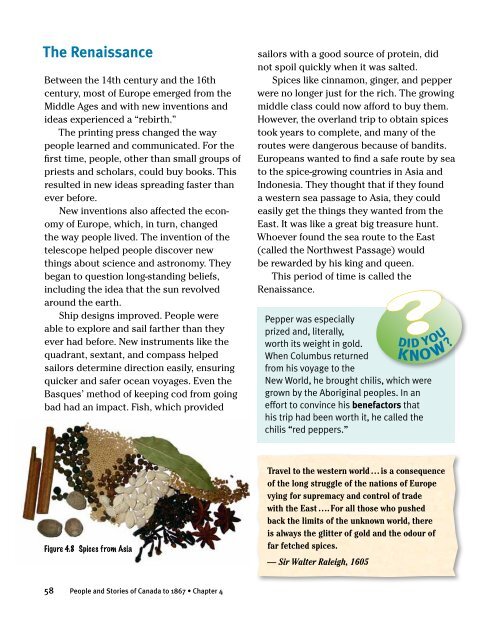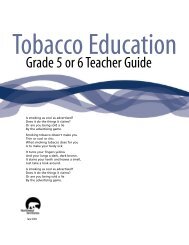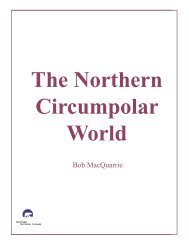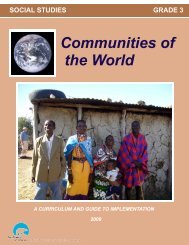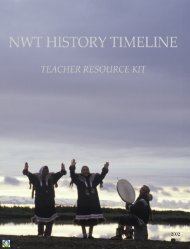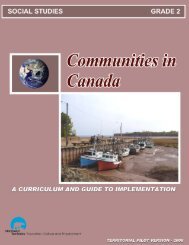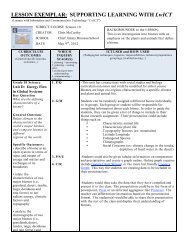The Europeans Come to North America 4
The Europeans Come to North America 4
The Europeans Come to North America 4
- No tags were found...
You also want an ePaper? Increase the reach of your titles
YUMPU automatically turns print PDFs into web optimized ePapers that Google loves.
<strong>The</strong> RenaissanceBetween the 14th century and the 16thcentury, most of Europe emerged from theMiddle Ages and with new inventions andideas experienced a “rebirth.”<strong>The</strong> printing press changed the waypeople learned and communicated. For thefirst time, people, other than small groups ofpriests and scholars, could buy books. Thisresulted in new ideas spreading faster thanever before.New inventions also affected the economyof Europe, which, in turn, changedthe way people lived. <strong>The</strong> invention of thetelescope helped people discover newthings about science and astronomy. <strong>The</strong>ybegan <strong>to</strong> question long-standing beliefs,including the idea that the sun revolvedaround the earth.Ship designs improved. People wereable <strong>to</strong> explore and sail farther than theyever had before. New instruments like thequadrant, sextant, and compass helpedsailors determine direction easily, ensuringquicker and safer ocean voyages. Even theBasques’ method of keeping cod from goingbad had an impact. Fish, which providedsailors with a good source of protein, didnot spoil quickly when it was salted.Spices like cinnamon, ginger, and pepperwere no longer just for the rich. <strong>The</strong> growingmiddle class could now afford <strong>to</strong> buy them.However, the overland trip <strong>to</strong> obtain spices<strong>to</strong>ok years <strong>to</strong> complete, and many of theroutes were dangerous because of bandits.<strong>Europeans</strong> wanted <strong>to</strong> find a safe route by sea<strong>to</strong> the spice-growing countries in Asia andIndonesia. <strong>The</strong>y thought that if they founda western sea passage <strong>to</strong> Asia, they couldeasily get the things they wanted from theEast. It was like a great big treasure hunt.Whoever found the sea route <strong>to</strong> the East(called the <strong>North</strong>west Passage) wouldbe rewarded by his king and queen.This period of time is called theRenaissance.Pepper was especiallyprized and, literally,worth its weight in gold.When Columbus returnedfrom his voyage <strong>to</strong> theNew World, he brought chilis, which weregrown by the Aboriginal peoples. In aneffort <strong>to</strong> convince his benefac<strong>to</strong>rs thathis trip had been worth it, he called thechilis “red peppers.”?did youknow ?Figure 4.8 Spices from AsiaTravel <strong>to</strong> the western world … is a consequenceof the long struggle of the nations of Europevying for supremacy and control of tradewith the East …. For all those who pushedback the limits of the unknown world, thereis always the glitter of gold and the odour offar fetched spices.— Sir Walter Raleigh, 160558 People and S<strong>to</strong>ries of Canada <strong>to</strong> 1867 • Chapter 4


